SHIBATA ZESHIN (1807-1891)A Lacquer Four-Case Inro with Antique Mirror Designs Meiji era (1868–1912), circa 1870–1890 With four interlocking cases and cover, of standard lenticular cross-section with straight sides, rounded corners, curved top and base, and integrated cord-runners, the roiro lacquer ground decorated in black maki-e with a continuous ground of ken-katabami mon (heraldic crests of swordblades combined with flowers of wood sorrel, Oxalis corniculata), an antique mirror on each side executed in chado-nuri takamaki-e, one of the mirrors eight-lobed with a dragon design, its carrying cord in red lacquer extending to the other side and terminating in a tassel, the other nine-lobed with a design of two ho-o birds alternating with paulownia crests, the compartments and risers gold nashiji, the shoulders and rims brightish gold fundame; the ojime of carnelian, signed in subori to the left of the handle of the smaller mirror Zeshin, 7.6cm × 4.8cm × 1.6cm (3in × 1 7/8in × 5/8in); lacquered wood manju netsuke decorated in gold, silver, and red hiramaki-e with two ho-o birds, 3.5cm × 2cm (1⅜in × ¾in); with a fitted wood storage box. (2).FootnotesProvenance: Misumi Collection. Sold in these Rooms, 10 November 2015, lot 6. A Royal Collection. Exhibited and Published: Nezu Museum, Shibata Zeshin no shikko, urushi-e, kaiga (Shibata Zeshin: From Lacquer Arts to Painting), exh. cat., Tokyo, 2012, cat. no.94. In 1875, Zeshin paid a visit to Nara where he was able to examine items stored in the Shosoin, the eighth-century Imperial treasure house in the precincts of the Todaiji Temple (Joe Earle and Tadaomi Goke, Meiji no Takara, Treasures of Imperial Japan, Masterpieces by Shibata Zeshin [in the Khalili Collection], London, Kibo Foundation, 1996, p.46, quoting Umezawa Ryushin's 1927 biography of Zeshin). Objects from the Shosoin, until then almost inaccessible to anyone outside the imperial court, subsequently played an increasing influential role in Japanese art from early in the Meiji era. Zeshin was no exception to this trend and it is likely that the mirrors depicted on this inro were loosely modelled on originals stored in the Shosoin, either Chinese Tang-dynasty examples or Japanese copies of around the same date. He lavished typically meticulous craftsmanship both on the mirrors and on the dense background pattern of mon (crests). Takao Yo notes that although chado-nuri, used here for the mirrors, is listed as a separate technique in Sawaguchi Goichi's monumental study of Japanese lacquer, Nihon shikko no kenkyu (1933), in Zeshin's time it would simply have been regarded as a variant of seido-nuri. Chado-nuri differs from seido-nuri in that it contains bengara (red iron oxide) in addition to orpiment (arsenic sulphide), producing an effect that, as Takao comments, is ideally suited to imitating the surface of antique bronze (Takao Yo, 'Shibata Zeshin no shikko giho: Kawari-nuri giho o chushin ni (Shibata Zeshin's Lacquer Techniques, Centred on the Kawarinuri Technique)', Ishikawa-ken Wajima Shitsugei Bijutsukan kiyo (Bulletin of the Wajima Museum of Lacquer), 6, 2011, figs.14, 15).
SHIBATA ZESHIN (1807-1891)A Lacquer Four-Case Inro with Antique Mirror Designs Meiji era (1868–1912), circa 1870–1890 With four interlocking cases and cover, of standard lenticular cross-section with straight sides, rounded corners, curved top and base, and integrated cord-runners, the roiro lacquer ground decorated in black maki-e with a continuous ground of ken-katabami mon (heraldic crests of swordblades combined with flowers of wood sorrel, Oxalis corniculata), an antique mirror on each side executed in chado-nuri takamaki-e, one of the mirrors eight-lobed with a dragon design, its carrying cord in red lacquer extending to the other side and terminating in a tassel, the other nine-lobed with a design of two ho-o birds alternating with paulownia crests, the compartments and risers gold nashiji, the shoulders and rims brightish gold fundame; the ojime of carnelian, signed in subori to the left of the handle of the smaller mirror Zeshin, 7.6cm × 4.8cm × 1.6cm (3in × 1 7/8in × 5/8in); lacquered wood manju netsuke decorated in gold, silver, and red hiramaki-e with two ho-o birds, 3.5cm × 2cm (1⅜in × ¾in); with a fitted wood storage box. (2).FootnotesProvenance: Misumi Collection. Sold in these Rooms, 10 November 2015, lot 6. A Royal Collection. Exhibited and Published: Nezu Museum, Shibata Zeshin no shikko, urushi-e, kaiga (Shibata Zeshin: From Lacquer Arts to Painting), exh. cat., Tokyo, 2012, cat. no.94. In 1875, Zeshin paid a visit to Nara where he was able to examine items stored in the Shosoin, the eighth-century Imperial treasure house in the precincts of the Todaiji Temple (Joe Earle and Tadaomi Goke, Meiji no Takara, Treasures of Imperial Japan, Masterpieces by Shibata Zeshin [in the Khalili Collection], London, Kibo Foundation, 1996, p.46, quoting Umezawa Ryushin's 1927 biography of Zeshin). Objects from the Shosoin, until then almost inaccessible to anyone outside the imperial court, subsequently played an increasing influential role in Japanese art from early in the Meiji era. Zeshin was no exception to this trend and it is likely that the mirrors depicted on this inro were loosely modelled on originals stored in the Shosoin, either Chinese Tang-dynasty examples or Japanese copies of around the same date. He lavished typically meticulous craftsmanship both on the mirrors and on the dense background pattern of mon (crests). Takao Yo notes that although chado-nuri, used here for the mirrors, is listed as a separate technique in Sawaguchi Goichi's monumental study of Japanese lacquer, Nihon shikko no kenkyu (1933), in Zeshin's time it would simply have been regarded as a variant of seido-nuri. Chado-nuri differs from seido-nuri in that it contains bengara (red iron oxide) in addition to orpiment (arsenic sulphide), producing an effect that, as Takao comments, is ideally suited to imitating the surface of antique bronze (Takao Yo, 'Shibata Zeshin no shikko giho: Kawari-nuri giho o chushin ni (Shibata Zeshin's Lacquer Techniques, Centred on the Kawarinuri Technique)', Ishikawa-ken Wajima Shitsugei Bijutsukan kiyo (Bulletin of the Wajima Museum of Lacquer), 6, 2011, figs.14, 15).


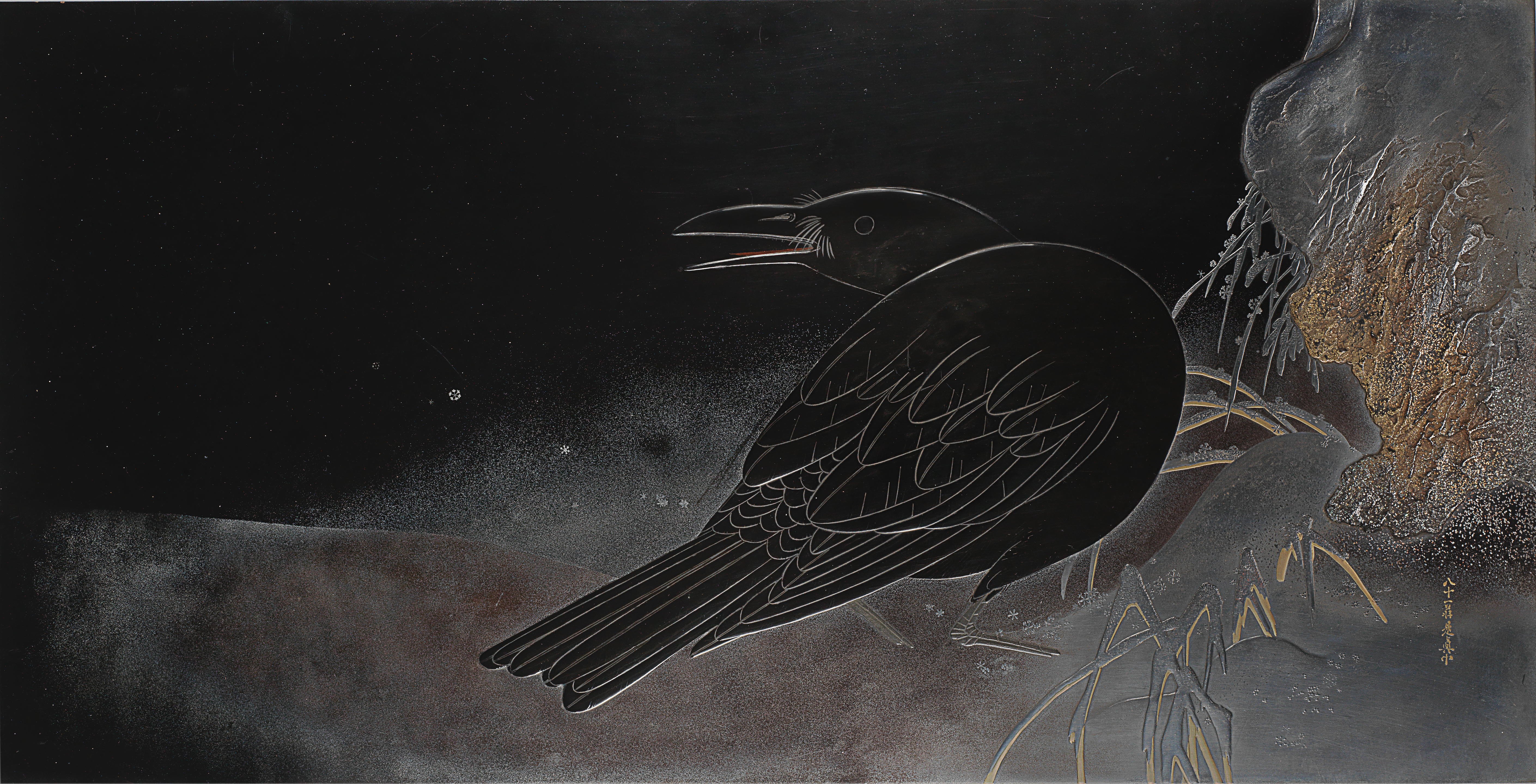
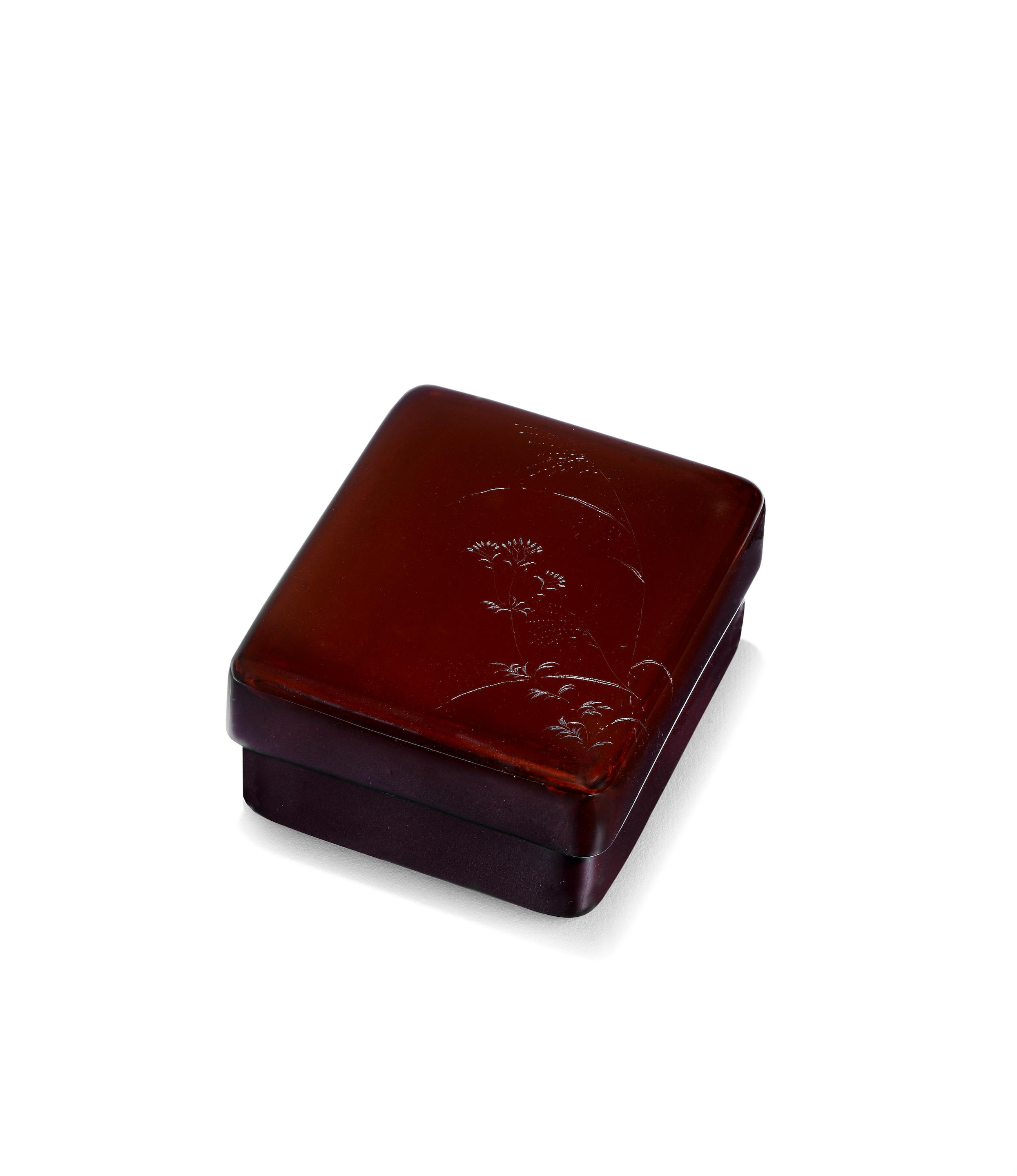
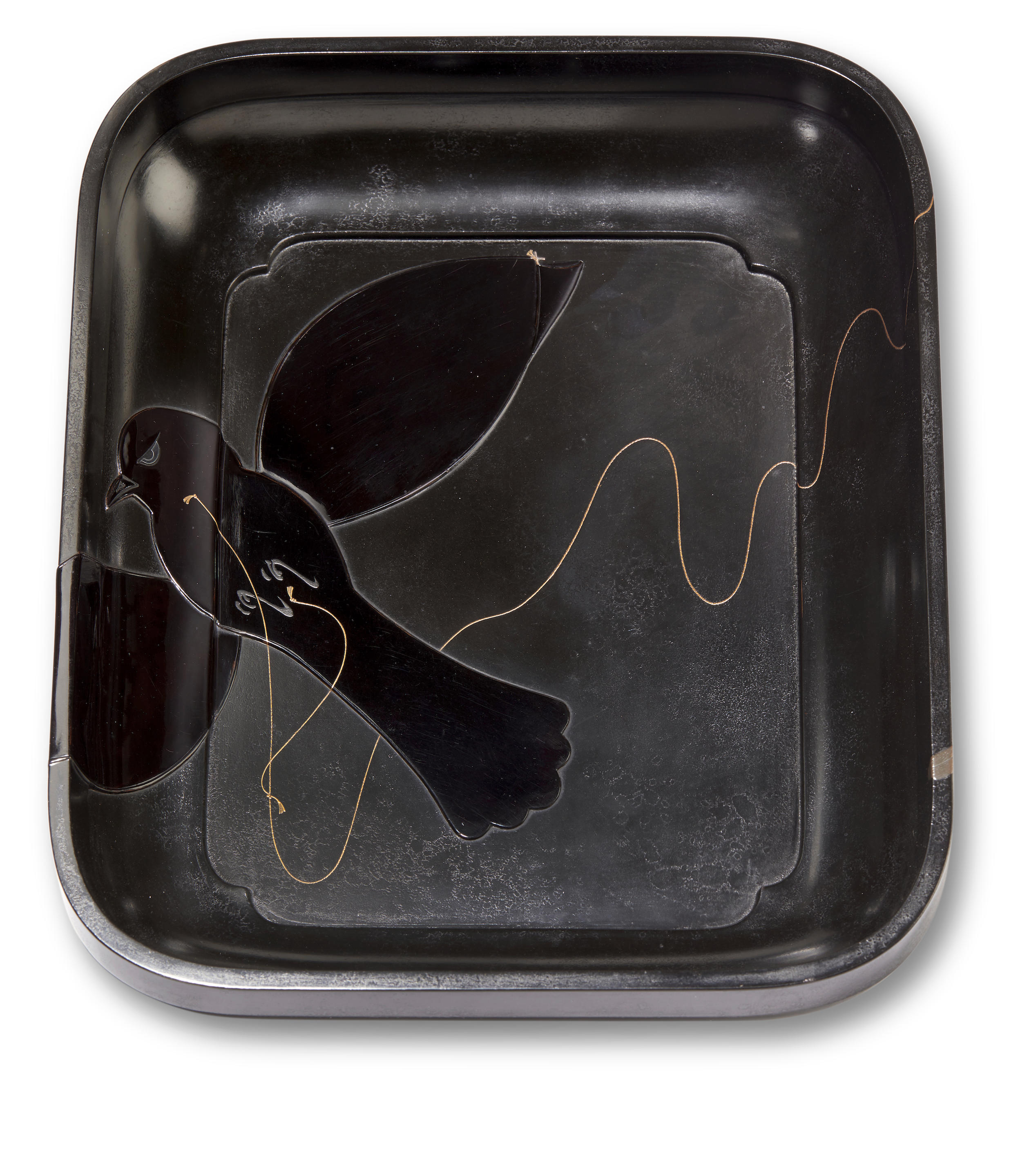
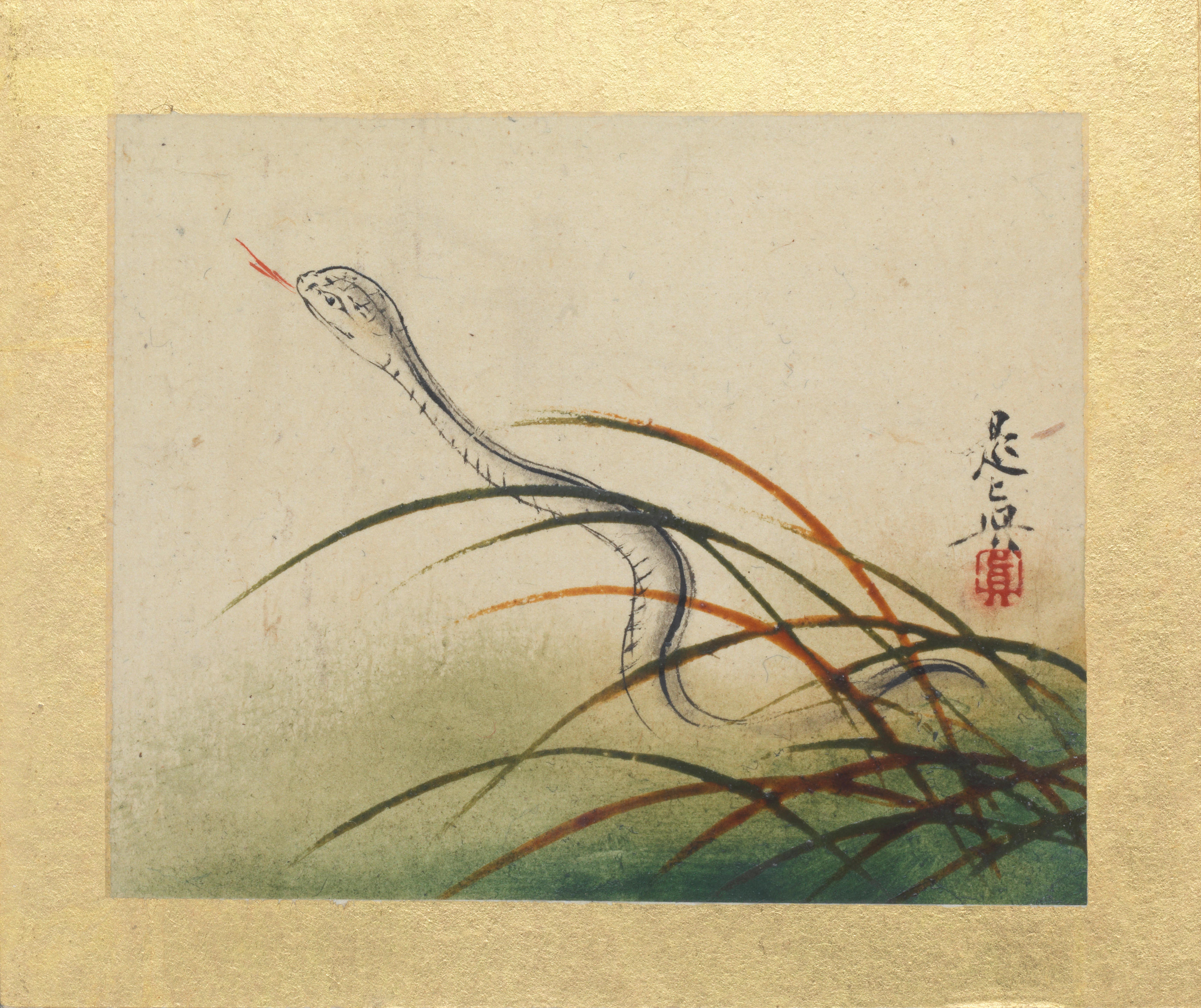

.jpg)



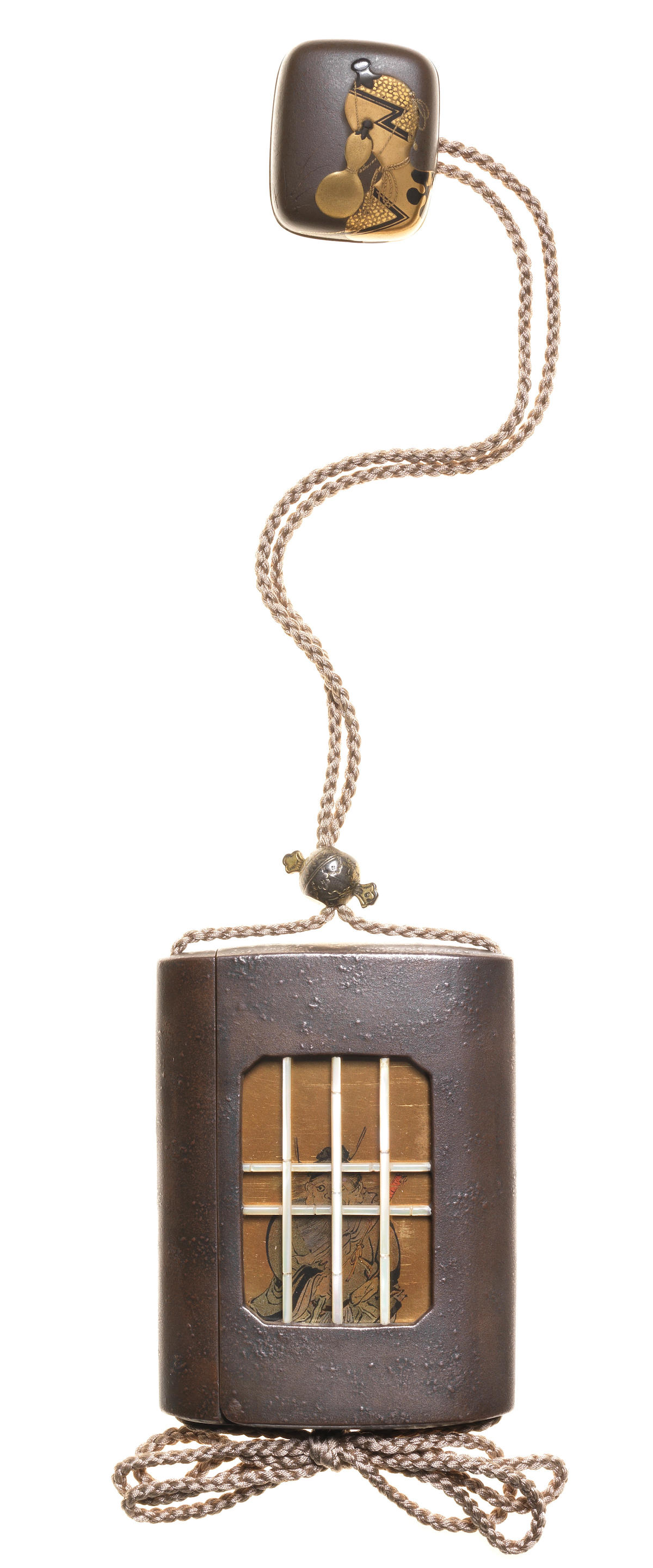


.jpg)
Testen Sie LotSearch und seine Premium-Features 7 Tage - ohne Kosten!
Lassen Sie sich automatisch über neue Objekte in kommenden Auktionen benachrichtigen.
Suchauftrag anlegen